

Table of contents
- Location
- substrate
- Plant
- tub culture
- Pour
- Fertilize
- harvest
- use of the fruits
- effect and ingredients
- waste
- hibernate
- repot
- propagation and cultivation
- seed
- cuttings
- Typical care mistakes, pests and diseases
- Wrong watering
- Lack of fertilization
- fungal diseases
- nematodes
Whether Lulo, Solanum quitoense, Quitorange or Quito Orange - the plant from South America has many names and is still almost unknown in Europe. With the appropriate knowledge, care is extremely easy and the exotic fruits bring variety on the menu and also contain valuable micronutrients that have a positive impact on health can have.
Location
The plants, which come from South America, originally grow in mountainous regions or higher-lying areas. They are therefore comparatively robust and withstand temperature fluctuations well. Due to their height of one to three meters and their sensitivity to frost, there are still a few points to consider when choosing a location. These are:
- avoid blazing sun but choose a light to partially shaded spot
- sheltered places with an almost constant temperature of around 20 °C are well suited
- there must be sufficient free space in terms of height
A notice:
Due to the sensitivity to frost, a culture in a bucket should be preferred. Otherwise, even in regions with mild winters, the plants will only last a year and a harvest cannot be expected. The conservatory is therefore also an ideal location for the plant.
substrate
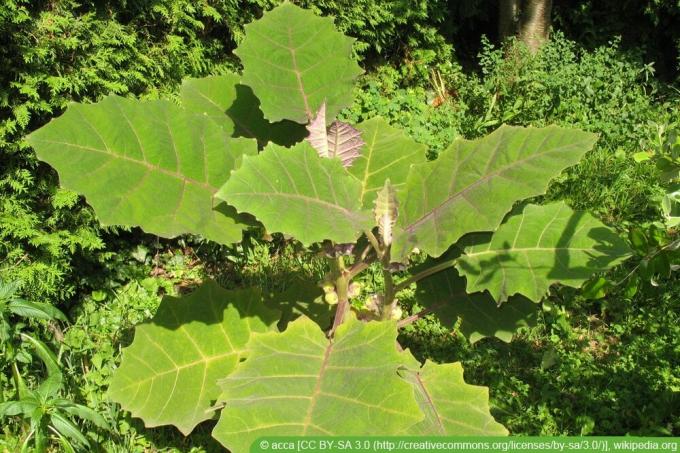
A loose, permeable and nutrient-rich substrate should be chosen for the adult plants. For example, plant or vegetable soil with sand or coconut fibers are well suited for loosening. The mixing ratio should be 2:1 – i.e. two parts earth and one part sand or coconut fibres.
Plant
Solanum quitoense can be planted directly outdoors after the last late frost. However, it is very sensitive to frost and must therefore be brought back indoors in autumn. If you want to plant the plant out, you should therefore plant it together with a pot or bucket, this makes it easier to remove it with the planter when the temperatures drop. Due to the expected height of the Quitorange, it is still easier to cultivate in a bucket.
tub culture
The Lulo can be ideally cultivated in a bucket. All that is required is a planter that is large and stable enough for the plant. A plant trolley is also recommended, on which the tub and the plant can still be moved when the nightshade plant has reached an impressive height.
In the case of bucket culture, care must also be taken to ensure that there is an adequate supply of water and nutrients. Since the amount of substrate is comparatively small, it has to be watered and fertilized more often. It makes sense to support the plant both outdoors and in the bucket. Experience has shown that three to four plant stakes are a good choice for this.
Pour
Although the Lulo grows in mountainous regions in its original homeland, it is sensitive to lime. When watering, you should therefore make sure that the water is as soft as possible and therefore low in lime. Pond water and water from the aquarium, for example, are ideal - as long as they do not contain any medication or other additives. Collected rainwater is also recommended.
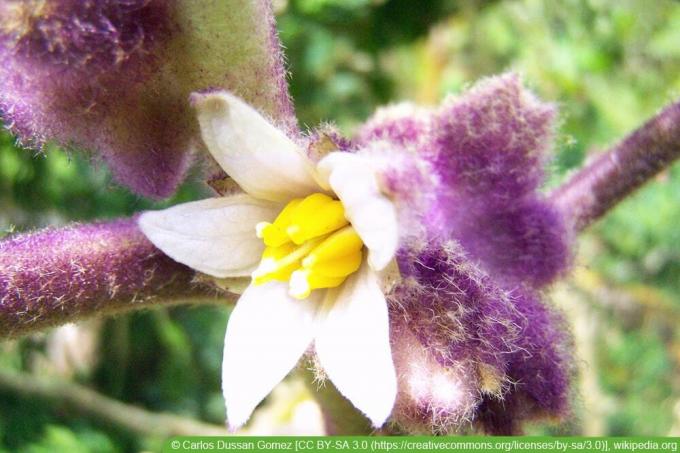
If these variants are not available or if there is not enough water, tap water can also be used. If the water is hard, however, this should be left for at least a week so that the lime can settle on the bottom. The sediment is then of course not used for watering. It is also important when watering the Quitorange that the substrate is always kept slightly moist, but avoiding waterlogging. Occasional drying of the soil is not a problem, but it is sensitive to waterlogging and the risk of rot increases.
Tip:
A drainage layer in the bucket, such as shards of pottery or coarse gravel, can reduce the risk of waterlogging and protect the roots from standing in the water.
Fertilize
The quit orange is a heavy feeder and therefore requires large amounts of fertilizer. Fertilization can be done weekly or every two weeks during the growth phase from April to September. The intervals between the nutrient supply depend on the chosen means. Pond water and aquarium water can be used weekly. Also suitable are:
- well rotted compost
- vegetable fertilizer
- tomato fertilizer
- coffee and tea set
- Plant manure, for example from stinging nettles
Alternatively, a slow-release fertilizer can be used. In any case, however, it is important to use a fertilizer designed for plants suitable for consumption. Since the Solanum quitoense is a nightshade plant, which also includes the tomato, for example, the same fertilizers can also be used.
harvest
If the naranjilla – as the lulo is called in Spanish – with sufficient heat and light all year round is supplied, is also watered appropriately and fertilized throughout, it can prove to be extremely productive prove In addition, a harvest can take place from May to October. The fruit is ready for harvest when the skin is tender and easily damaged, yields to pressure, looks smooth and can be picked off without effort. However, you can also wait for the fruit to fall off on its own. Then the health value is highest.
use of the fruits
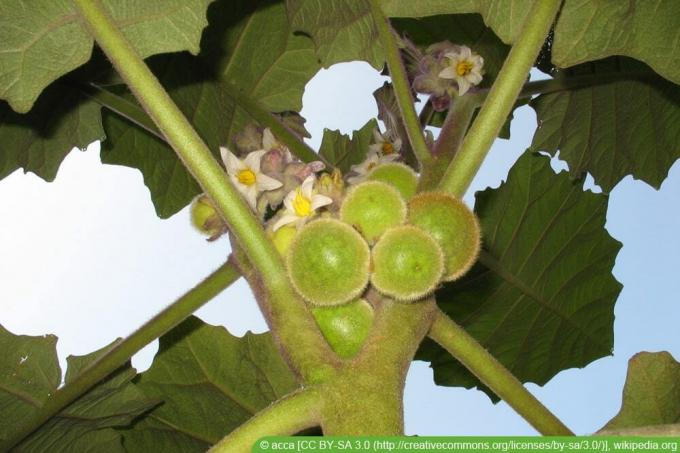
The fruits of the lulo can be eaten raw. To do this, the pulp and seeds are simply spooned out of the shell. But they are also suitable for:
- juices and smoothies
- Marmalades, jams and jellies
- fruit salads
- Cakes, tarts and other baked goods
In any case, the peel should not be processed or consumed.
effect and ingredients
The fruits of the naranjilla are said to have an overall positive effect on the body and health due to the micronutrients it contains, such as vitamins, minerals and phytochemicals are. In addition, the fruit is surprisingly low in calories and has an exotic taste reminiscent of a mixture of pineapple and strawberries. However, other specific effects are also ascribed to the fruits. Below:
- Strengthening of the immune system
- improvement of eyesight
- Mood swing relief
- detoxification
- improvement of the complexion
- regulation of cholesterol levels
- increase in bone strength
- prevention of cancer diseases
- acceleration of digestion
- Impact on heart health
Scientific evidence for most of these influences is not yet available. However, it has been studied and confirmed that the fruits of the naranjilla are rich in antioxidants. The content of these healthy substances is highest when the fruits are harvested ripe or fall off. Therefore, they should be consumed as quickly and freshly as possible and not stored for a long time.
waste
With the Solanum quitoense, no regular blending is required. However, it is advisable to remove damaged or dead parts of the plant, as these can increase the risk of disease, rot and mould. In any case, clean, sharp cutting tools should be used for this. The blades of knives or scissors should be disinfected before and after use. In addition, the care measure should be carried out on a dry day if possible, so that the Cut surfaces close quickly and no entry points for parasites or pathogens represent.
It is also possible to limit or reduce the height of the plant by cutting it. Since the plants can grow up to three meters high, annual trimming can make sense. Pruning can be done in spring or fall.
hibernate
Since the Quito orange thrives best at a temperature of 20 °C and is sensitive to frost, it must be overwintered indoors. Important here are constant temperatures on the one hand and sufficient light on the other. If outdoor temperatures drop to or below 20°C, the plants should be brought indoors. Here they need a bright place. The warmer they are, the more light they need. Since there is not enough sunlight even on a south-facing window in winter, plant lamps should be used.
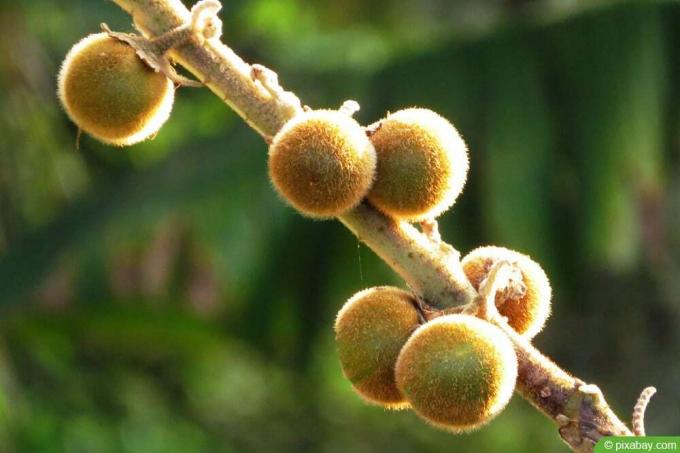
Watering and fertilizing can be slightly reduced during the winter. However, the substrate should never dry out completely. In addition, nutrients should continue to be supplied. It makes sense to increase the intervals between fertilizer applications to once a month.
repot
Repotting or changing the substrate is recommended for the Lulo once a year. It is best done in spring when the first new shoots are growing. On the one hand, nutrients are made available to the plant. On the other hand, this reduces the risk of infestation with parasites or pathogens. The substrate mixture described above, consisting of two parts earth and one part sand or coconut fibers, is used. The old substrate should be thoroughly but carefully removed from the roots. Experience has shown that it also makes sense to add well-rotted compost or a long-term fertilizer from the trade to the soil.
propagation and cultivation
The Solanum quitoense is rarely available as a plant on the market, but seeds are very easy to find, at least online.
seed
If you want to use these or seeds from the fruits for cultivation, you should proceed as follows:
- Provide planters with a drainage layer of gravel or potsherds and fill with potting soil. Alternatively, coconut fibers can also be used.
- Soak the seeds in water for a day. If the seeds were obtained directly from fruit, they should be thoroughly separated from the remains of the pulp before cultivation and after soaking. Otherwise mold could form. They can also be dried and stored in a cool, dark, dry place over the winter and started in the spring.
- The seeds are placed on the ground at a distance of three to five centimeters and only lightly covered with substrate.
- The substrate is well moistened with soft, lime-free water using a plant sprayer, but should not be wet. Then the cultivation vessel is placed in a bright and warm place.
- After two to three weeks, the first shoots should appear. When the young plants have reached a height of 20 to 30 centimeters, they can be planted in individual pots or tubs. It is important that a change to nutrient-rich soil takes place.
cuttings
- In the spring, shoot tips with a length of 15 to 20 centimeters are cut off.
- The shoots are placed in water until they develop roots, or placed directly in potting soil.
- When rooting in water, the cuttings are placed in nutrient-rich and loose soil after two to three weeks. When rooting directly in soil, the substrate must be kept slightly moist throughout. Propagation from cuttings requires less time and effort than growing from seed. However, care must be taken to ensure that the substrate does not become too dry or too moist and that mold does not form.
Typical care mistakes, pests and diseases
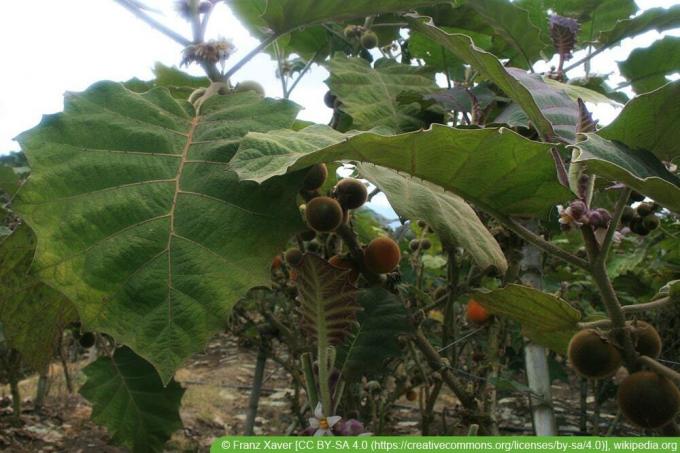
The Naranjilla is a comparatively low-maintenance plant, but some mistakes can occur during cultivation. In addition, diseases and pests can become problematic. These potential hazards are:
Wrong watering
Drought, hard water or waterlogging - errors in watering are noticeable in dried-up leaves, stains or rot. In addition, growth can be reduced and the fruit can also fall off prematurely. Tempered, soft water in sufficient quantities and drainage in the bucket are crucial and the best way to prevent these problems.
Lack of fertilization
A lack of nutrients can also cause various problems. These include leaf discolouration, reduced growth, low yield and increased susceptibility to diseases. The use of a long-term fertilizer and the use of natural fertilizers or vegetable fertilizer prevents these deficiency symptoms.
fungal diseases
On the one hand, fungal diseases can result from the fact that the plant is exposed to excessive humidity and is not adequately ventilated. A lack of ventilation is caused, for example, by the fact that the plants are too close to other plants or have too dense foliage. However, prolonged drought can also make the Lulo susceptible to fungal diseases such as powdery mildew. The best prevention consists of an adapted and coordinated care. If fungal deposits, discolouration or other damage to the plant appear, the exact disease should first be determined and then an appropriate fungicide should be used.
nematodes
Nematodes are roundworms and can be quite useful. However, if their numbers get out of hand, they can harm the Naranjilla. Deformations on the leaves and in the root area can be possible consequences, as can irregular growth, wilting and dying of the plant. The best prevention is the annual change of substrate. If an infestation has already occurred, an immediate change of soil and agents from specialist shops can help to save the plant. Damaged plant parts should be removed and discarded or destroyed. Under no circumstances should the plant parts be placed on the compost, as the nematodes could spread from here to other areas.
 Home editorial office
Home editorial office
Learn more about Exotic Fruits

Mexican mini cucumber, Melothria scabra: Care from A – Z
The Mexican mini cucumber promises a refreshing treat for the palate in the summertime. As an annual climbing plant, the tropical pumpkin plant with yellow flowers is a pretty eye-catcher in the bed and on the balcony. The pretty Melothria scabra combines its exotic charm with modest demands. Read a tried-and-tested guide to care from A to Z here.

Growing watermelons: how to grow melons yourself
Watermelons are extremely heat-loving plants, but with a few tricks they can also be cultivated in the home regions and cultivated successfully. The site conditions and care play an important role. If these factors are right, the harvest of juicy melons will be plentiful.
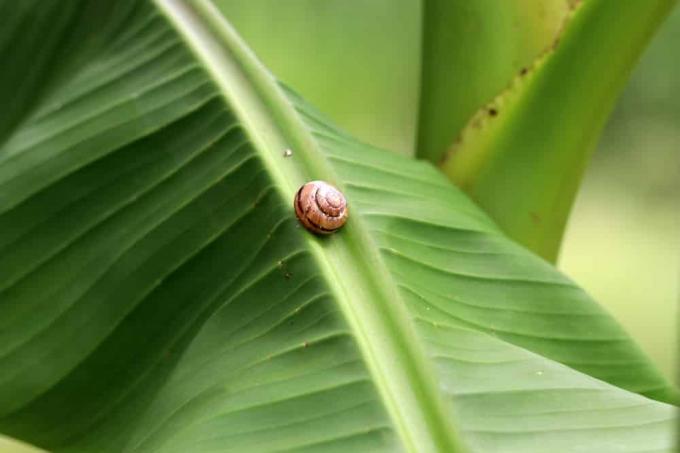
Zierbanane, Musa Banana - care and instructions for wintering
With its majestic shape, the ornamental banana is a welcome guest in conservatories and imaginatively designed living spaces. The tropical Musa Banana looks gorgeous in a bucket on a summery balcony. This guide provides you with detailed information about the right care and provides well-founded instructions for overwintering the tropical beauty of plants.

Planting an avocado seed – this is how you grow an avocado tree
Avocados are already a delicacy in the local kitchen and it is hard to imagine life without them. But the plant is also becoming increasingly popular in the local latitudes in tubs as a houseplant. So if you still have seeds left after processing, you can plant them.
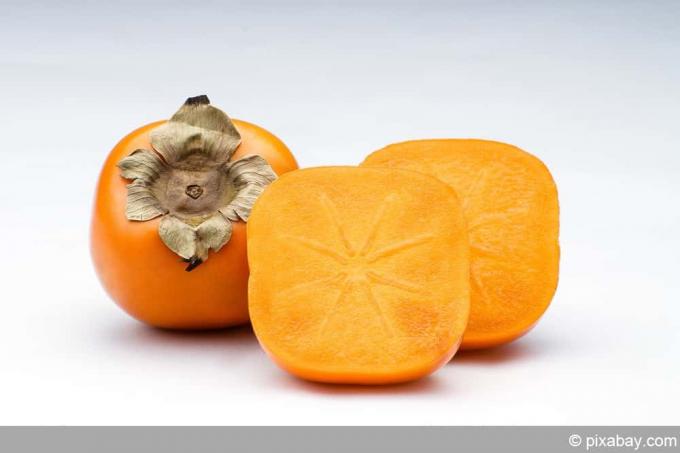
Growing Sharon fruit - how to grow persimmon plants from seed
The Sharon fruit, also known as the persimmon tree, is not yet widespread in the local latitudes. As a rule, the tree is cultivated here in a bucket because it is not hardy. The seeds of the fruit are now also being offered more and more frequently for your own cultivation.

Avocado, Persea americana: profile and nutritional values - is it healthy?
For a long time, the avocado was spurned as a calorie bomb. Today, the green fruit has established itself as a superfood and is experiencing a boom. Is Persea americana healthy or not? This profile and a look at the nutritional values shed light on the darkness.
